A part of our duties and responsibilities, as a senior missionary couple, is to document the events and activities of the Church in the Africa South Area which as I’ve mentioned before includes 13 different countries.
In the last few weeks, we have traveled to the countries of Malawi and Zimbabwe to participate in several humanitarian projects,
Malawi
The Church’s Humanitarian Initiatives generally fly pretty much under the radar rarely being mentioned in the media – which is the way it should be. Because of this lack of visibility, even as a senior couple serving a mission in Africa, I had no idea of the scope and variety of humanitarian projects sponsored and executed by the Humanitarian Department of the Church until we were actively involved in documenting several of the hundreds of these projects that are on going all in the Africa South Area – not to mention the fact that similar projects are in progress in dozens of other countries where the Church focuses their humanitarian efforts.
The specific projects we were able to participate in during the last few weeks were child-nutrition projects designed to identify malnourished children under the age of five in Malawi and Zimbabwe.
This T-Shirt sums up the objective of this humanitarian initiative pretty well.
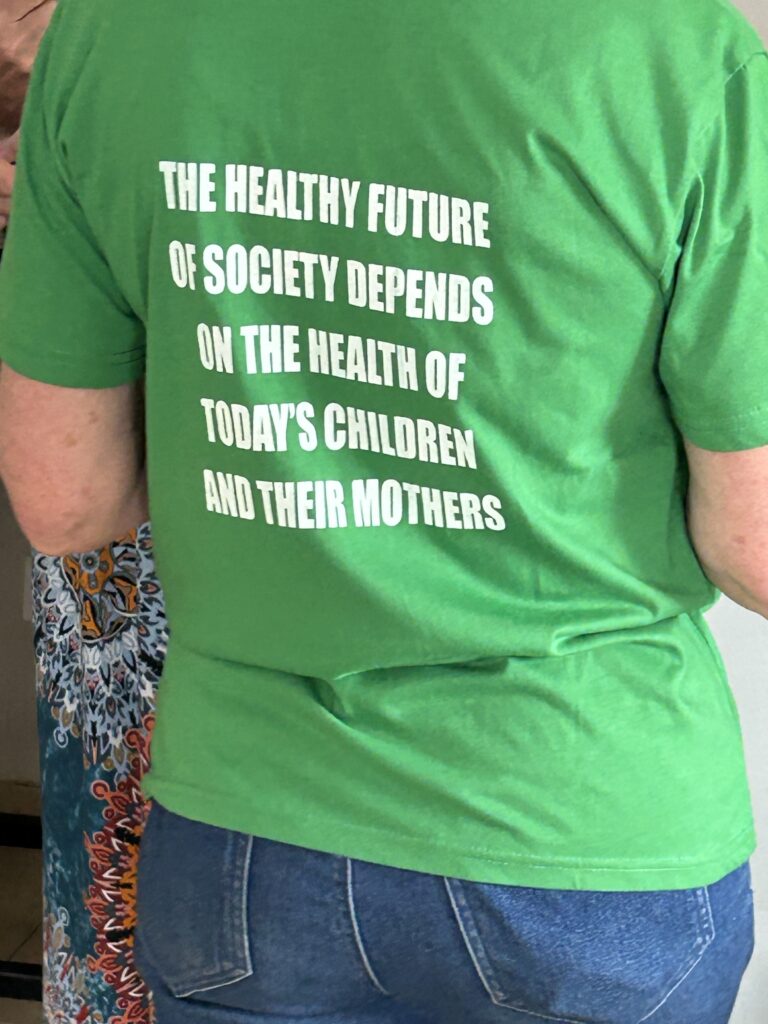
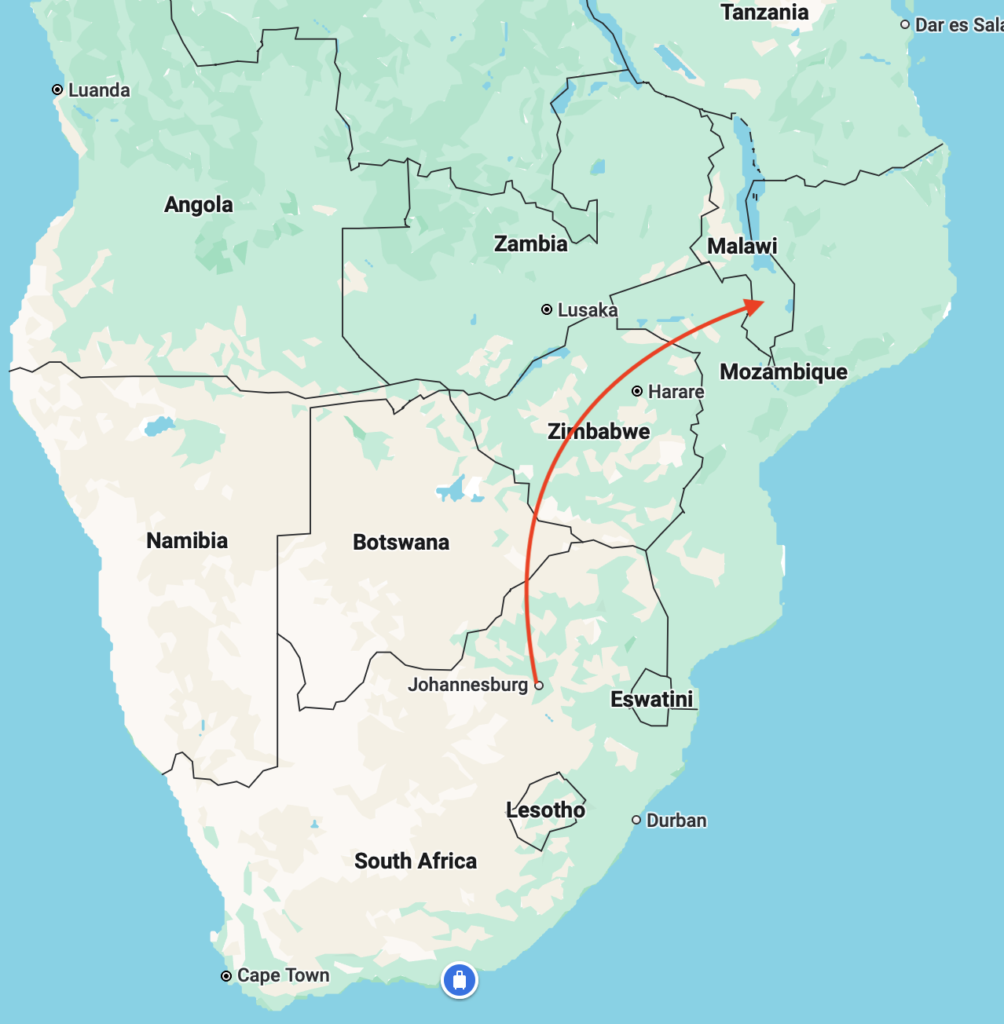
The Blantyre, Malawi trip route.
Zimbabwe
The following week we flew to Zimbabwe to document a similar humanitarian project in a much more rural area of the country where mothers and their children in some cases had to walk for several hours carrying their children all of the way to attend the screening.
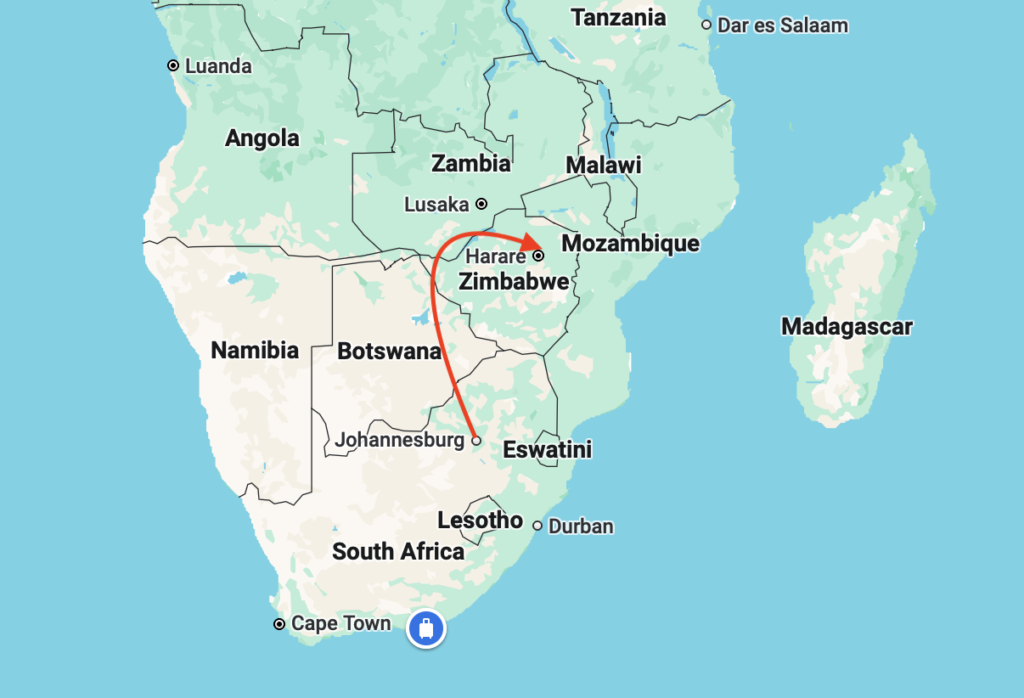
The trip route to Harare, Zimbabwe.
if you would like to learn more about the purpose and a general overview of these humanitarian projects we had an opportunity to participate in, you can do one of two things.
1, Click on the blue link below to read a detailed and extended overview of the results of the child-nutrition projects we attended.
Humanitarian Projects-Child Nutrition
2. To learn more about these humanitarian projects in shorter summary format, continue to read about these projects below.
Humanitarian Project Summary
The scope of these humanitarian projects includes the screening of mothers with children under the age of five years old who are members of the Blantyre Malawi and Harare Zimbabwe Stakes to determine the physical development of children and the assign a current nutritional profile for each screened child.
If a child is classified as malnourished, then a nutritional program is provided to the mothers of these children to which includes addressing the malnutrtional issues with education and providing a food program. All of this is administered and coordinated by the stake and branch relief society presidents as well as the local branch presidents and bishops where additional help is needed to member families.
The Process
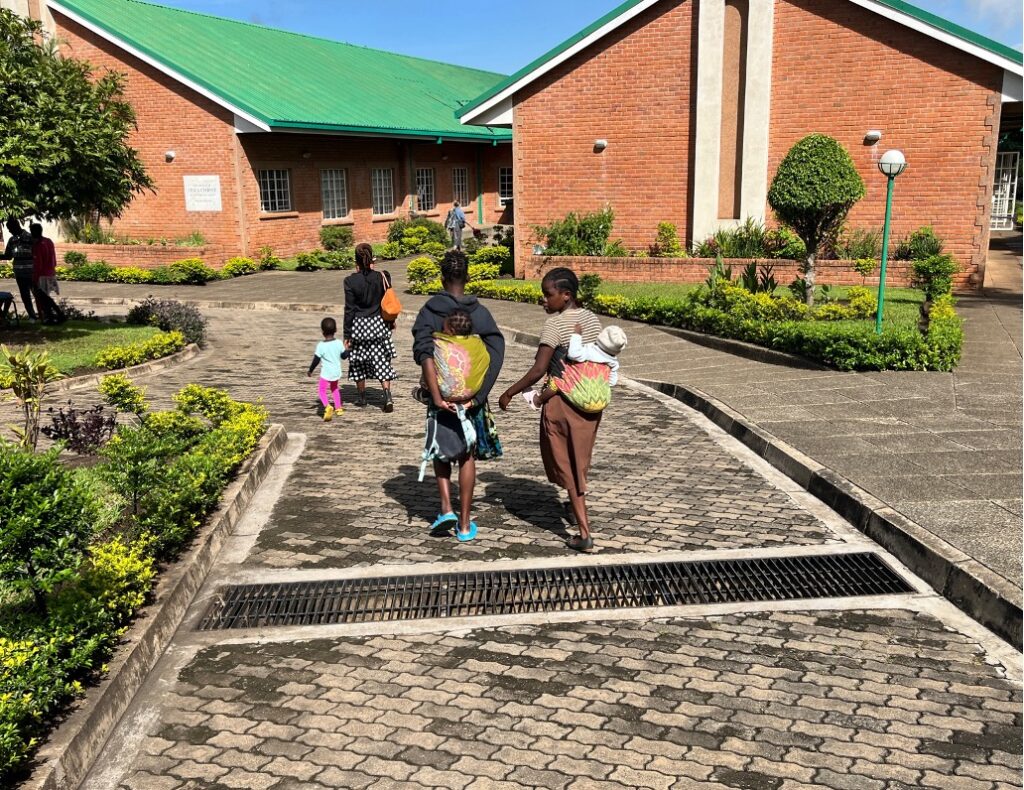
Mother’s Arriving for the Screening
Administration of Nutritional Screen
The Church’s Humanitarian Department brought in outside medical professionals to do the screening and provide nutritional counseling for the mothers of children who were determined to be malnourished.
The App
A cloud-based software application named Share My Health App, developed by the Africa South Area humanitarian department, incorporates an algorithm into the App that uses each child’s screening data to determine the developmental level of each child by benchmarking children’s screening data against the physical growth data of healthy children of similar ages.
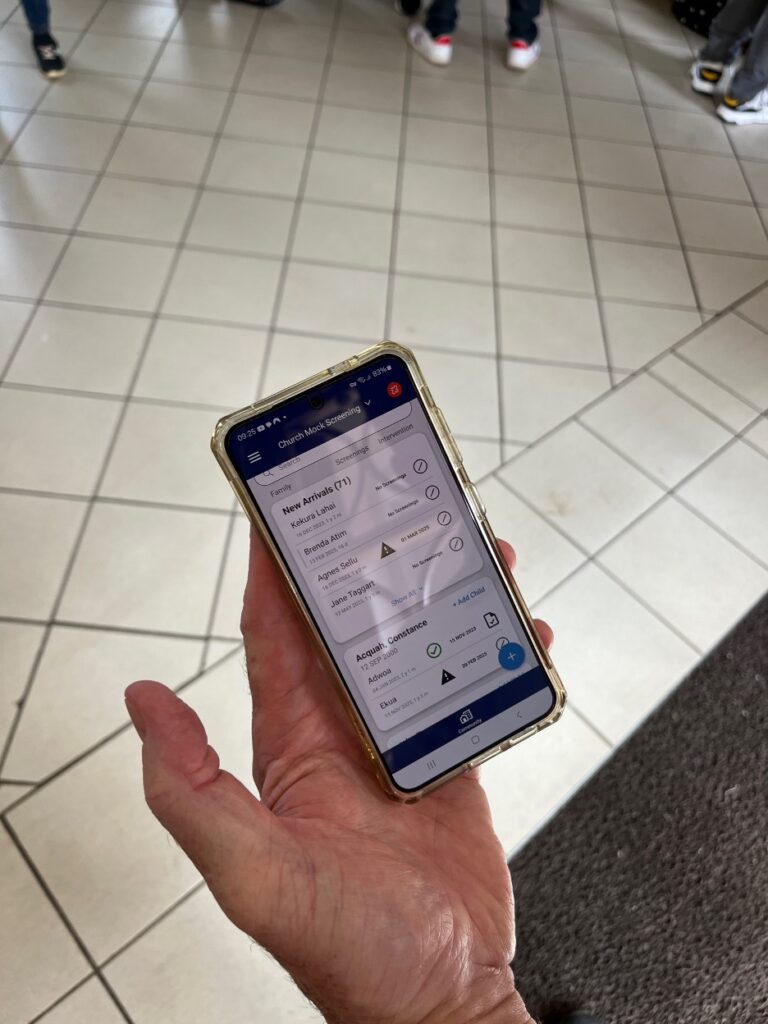
The Share My Health App
Based on this growth benchmarking by the App, nutritional levels of the screened children can be determined. The child’s measurements and weights identifies any malnutrition issues and assigns each screened child to one of four nutritional categories: adequate, slightly malnourished, moderately malnourished, or severely malnourished. The algorithm is able to compute accurately nutritional levels and do this in real time.
Interesting, during these screening, several children were identified to be severely malnourished – so much so, that they were taken to the hospital.
Arriving For Screening
After arriving at the stake center meetinghouse, local member volunteers guided the parents and their children to the church’s meetinghouse cultural hall where they are seated on chairs waiting to register for the screening.
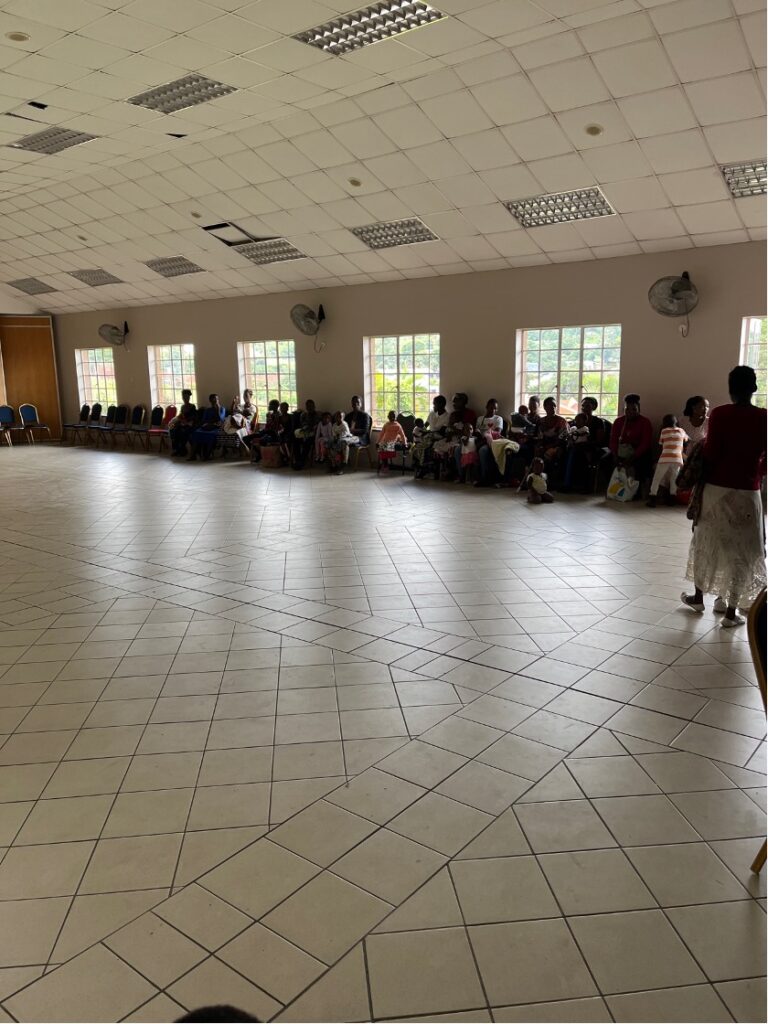
Mother’s lined up to register for their children’s nutritional screening .
Screening
After registration, the parent and child are directed to the screening area. The screening includes the weighing, collecting the height, and the arm measurements of each child. This information is entered into the Share My Health App creating a profile for each screened child.
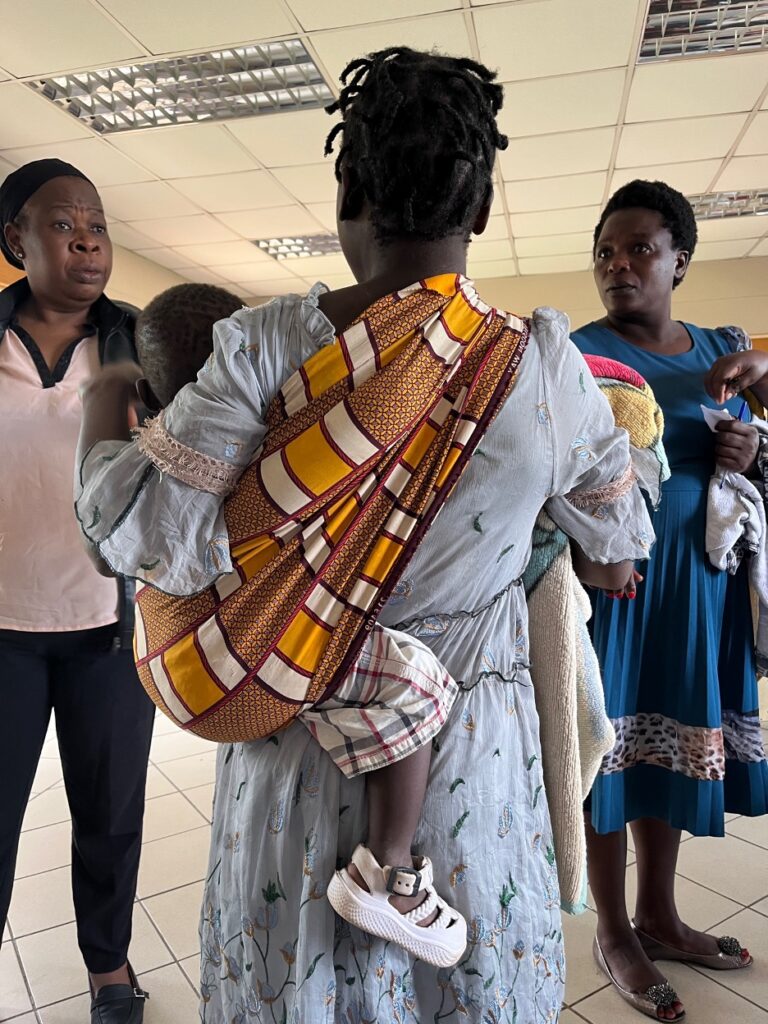
Mother’s on their way to the screenings
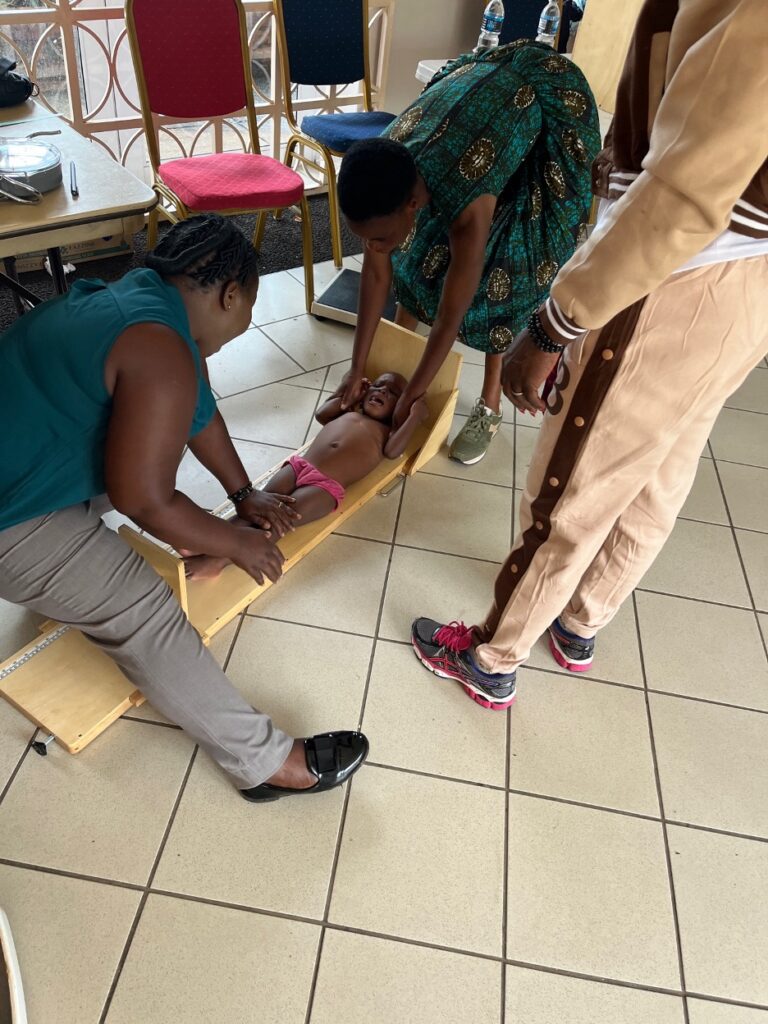
A child height is measured. This info input in the Share My Health App.
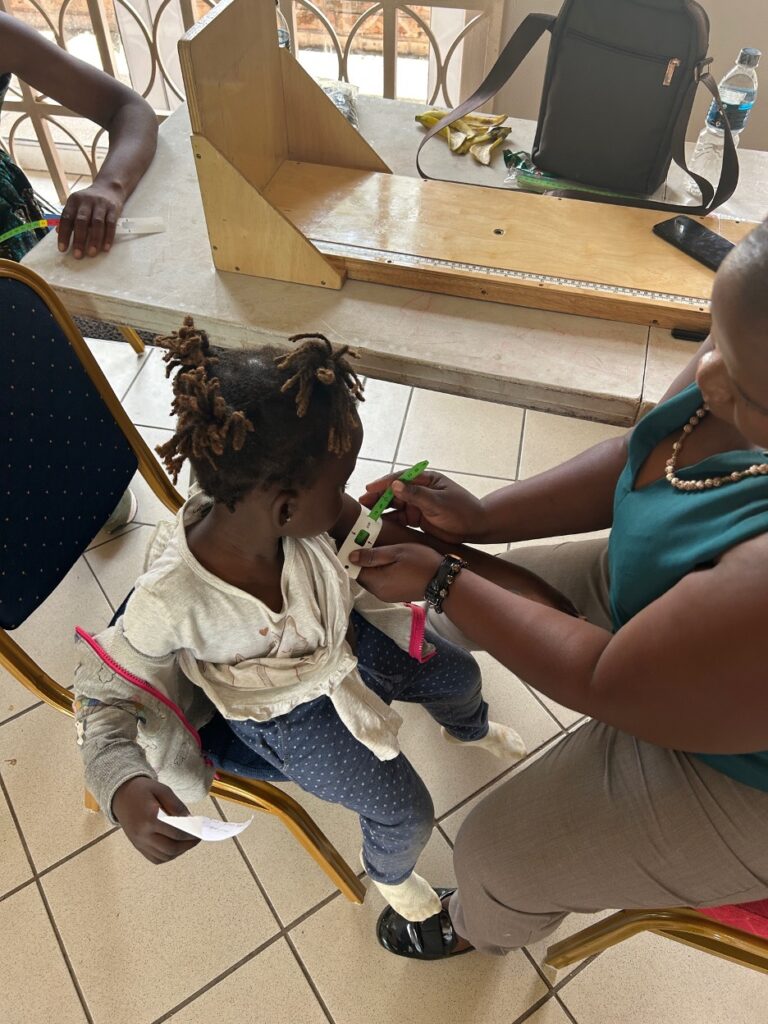
The circumference of the arm is measured (as well as other arm measurements) which is one of the metrics used to determine if the child is malnourished based on the amount of growth of the arm..

Each child is weighted and this data is input in the My Health App.
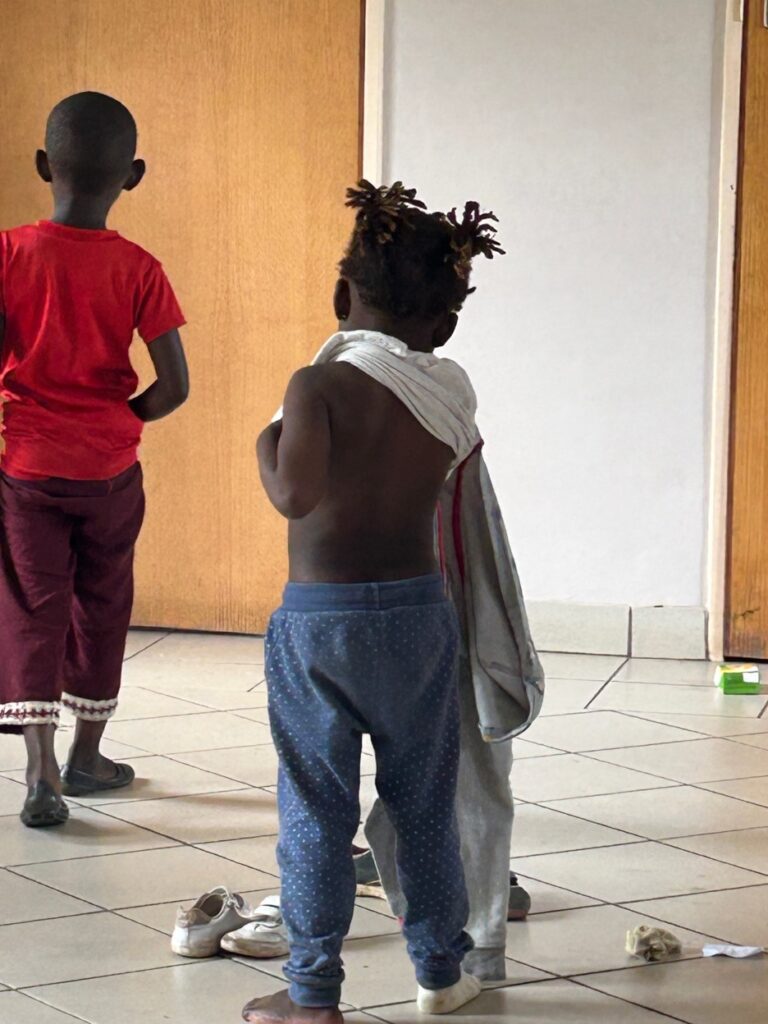
After all of the screening data has been captured, children get dressed.
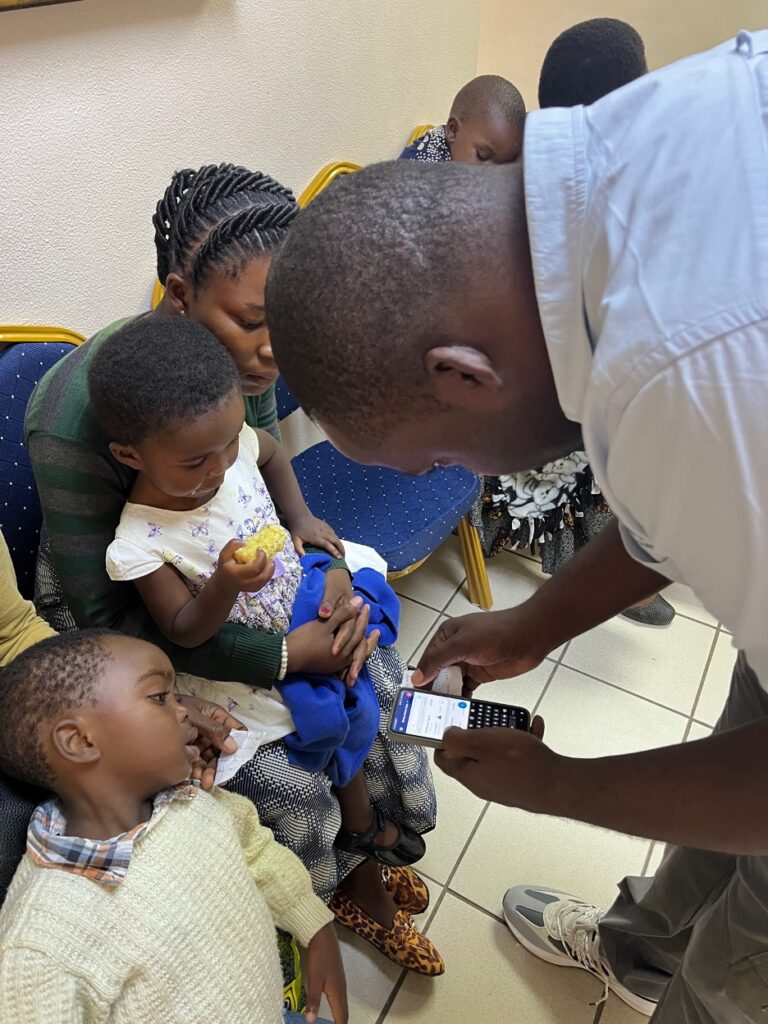
After all of the screening data is input into the My Shared Health App.
Counseling
Since this information is collected in real time, if a child is determined to be malnourished, the parent meets with a nutritional counselor (who has been hired by the humanitarian department) who provides nutritional counseling to the mothers of the children in their own language.
All of the information collected enables food to be provided to address the immediate needs of the family. This information is passed along to local church leaders where additional support for the family can be provided if necessary.

Mother’s leaving after the screening to return home….some will walk for 2 – 3 hours before getting home.
What I learned from these humanitarian projects is that the amount of good done by early detection of malnutrition issues is hard to quantify and that the long-term benefit will be life changing for many of these families. However, regardless of how you quantify the success of this project, one thing for sure is that the lives impacted by what we witnessed will have a lasting impact on those children screened that were identified as malnourished.
What I continue to learn about Africa……
In Johannesburg, South Africa there is no formal recycling program.
One of the positive side effects of this situation is this provides a means of income for the less and under employed individuals where they can gather recycled items such as plastics, glass, and cardboard from trash bins that are place out at the curbs in residential neighborhoods for trash pickup.
In the early mornings during my walks, I get to see these ad hoc recyclers sorting through the trash bins to find recyclable items to take to a recycling center to sell for cash.
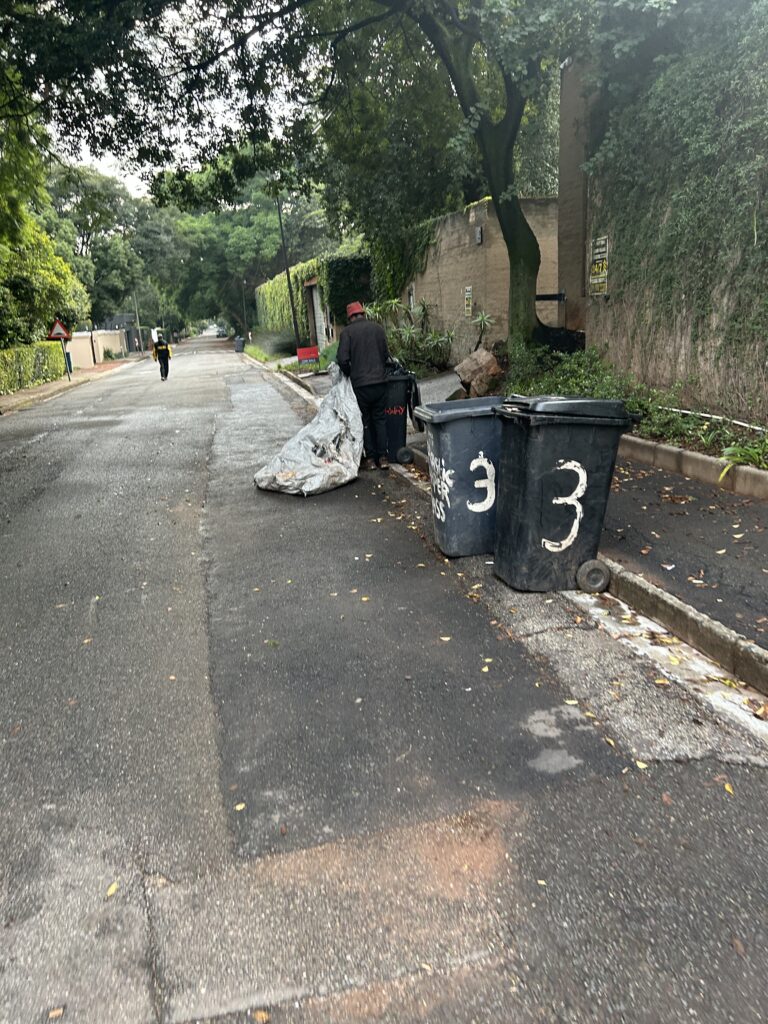
Early morning trash bins out for pickup.
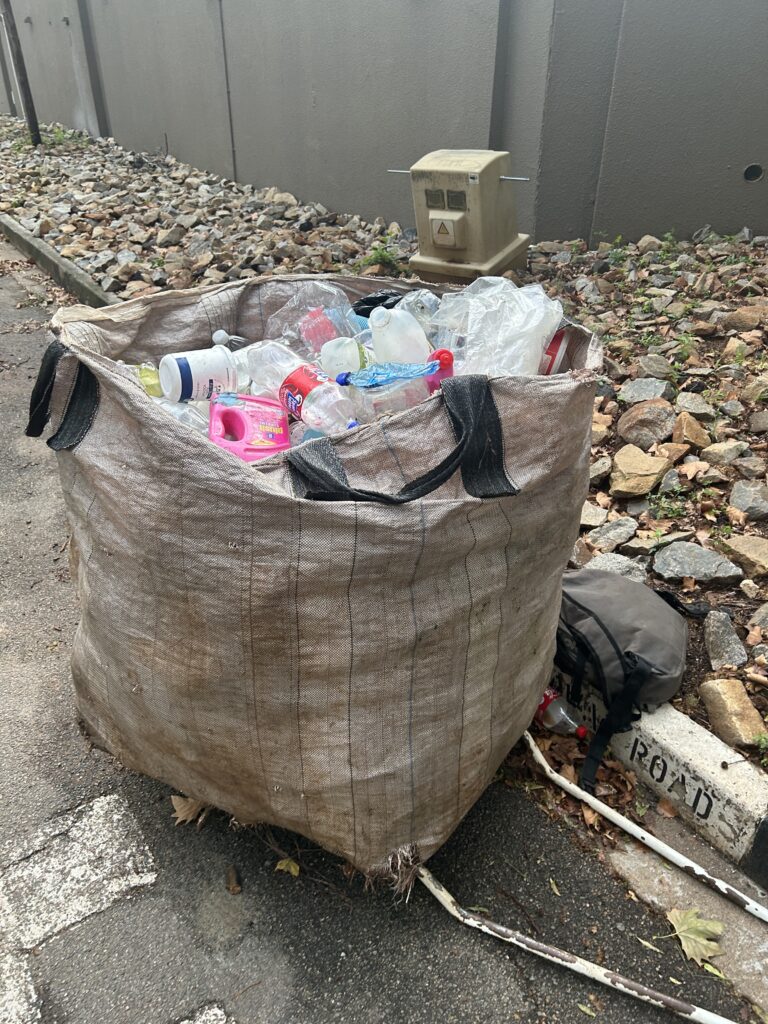
The ad hoc recyclers use bags to gather items to sell to recycling centers.
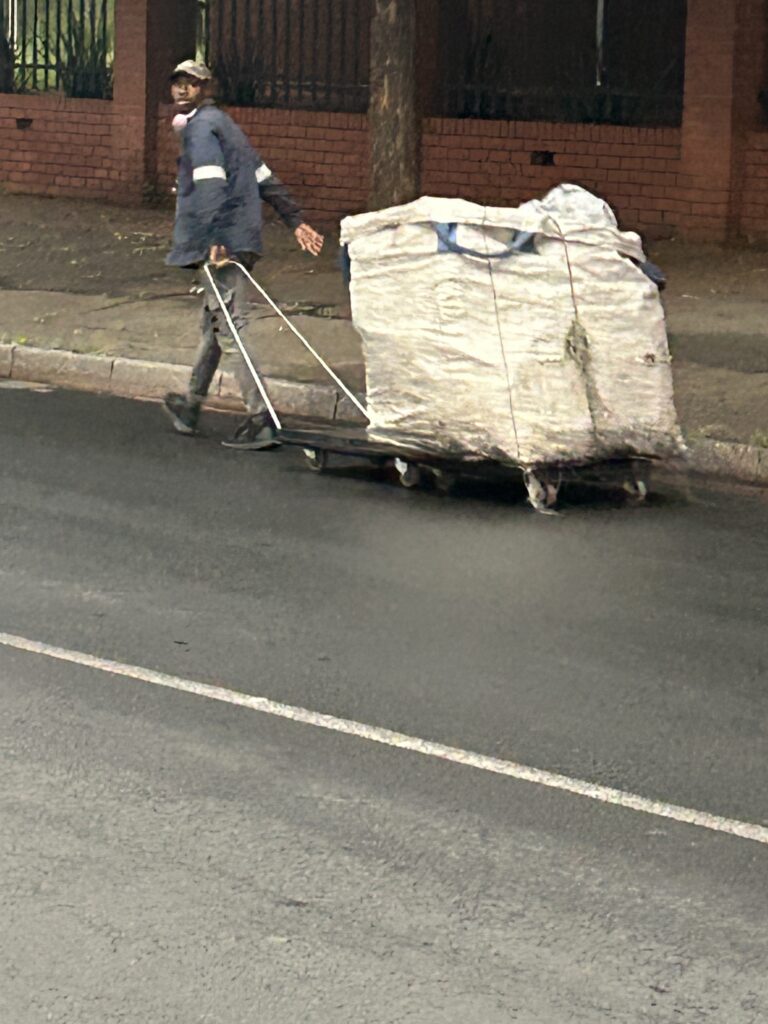
Some of these recycling bags are three times larger than the picture above. These bags are manually pulled for miles. From the neighborhood where we live much of the journey is uphill to the recycling centers where the recycled items are sold.
Thought of the Day: Not all puppies open their eyes at the same time. – a Shona (an African tribe) proverb.
Scripture of the Day: The glory of God is intelligence, or, in other words, light and truth. -Doctrine and Covenants 93:36
